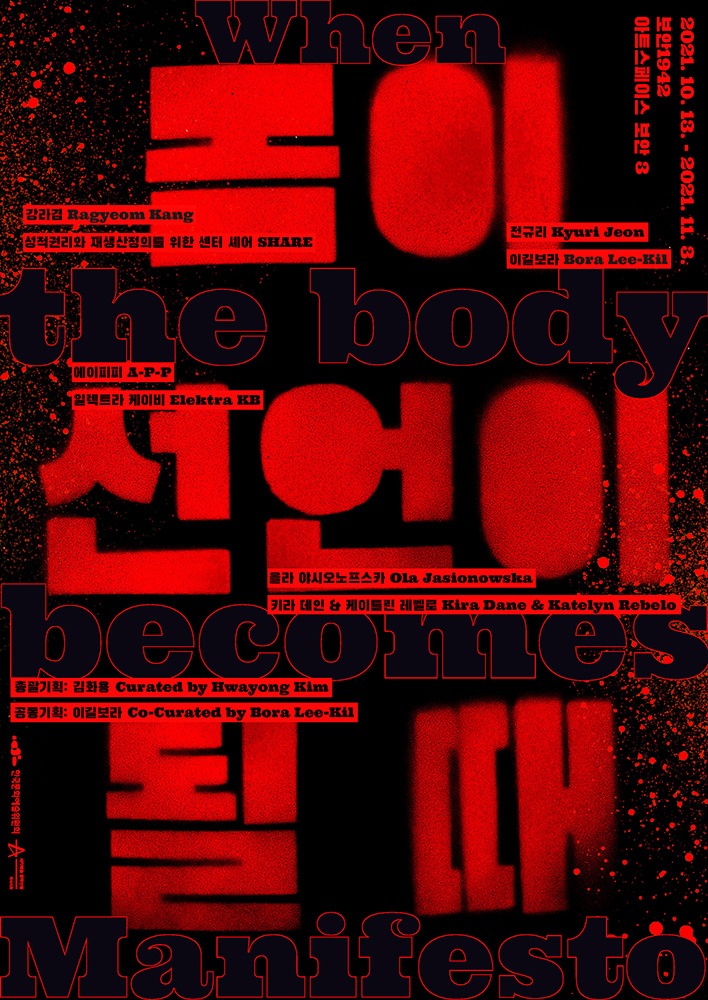
| Period| | 2021.10.13 - 2021.11.03 |
|---|---|
| Operating hours| | 12:00 - 18:00 |
| Space| | Artspace Boan 1942(Boan1942)/Seoul |
| Address| | 33 Hyojaro, Jongrogu, Seoul, SouthKorea |
| Closed| | Monday |
| Price| | Free |
| Phone| | 02-720-8409 |
| Web site| | 홈페이지 바로가기 |
| Artist| |
강라겸, 이길보라, 전규리, 성적권리와 재생산정의를 위한 센터 셰어 SHARE (나영정 안팎 이은진/ 디자인 협업 여혜진), 에이피피 (거리 투쟁의 아카이브), 올라 야시오노프스카, 일렉트라 베이키, 키라 데인 & 케이틀린 레벨로
|
정보수정요청



|
|
Exhibition Information
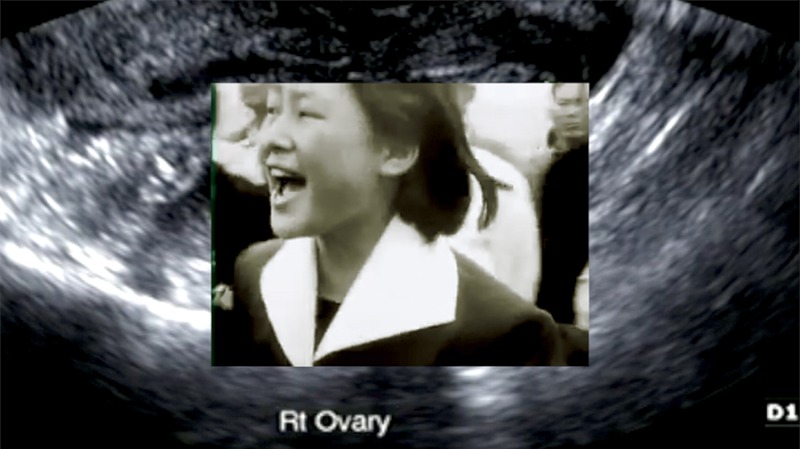
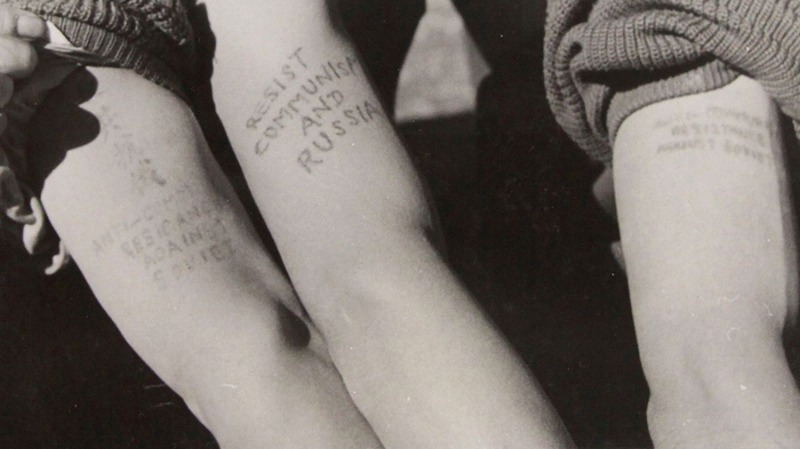
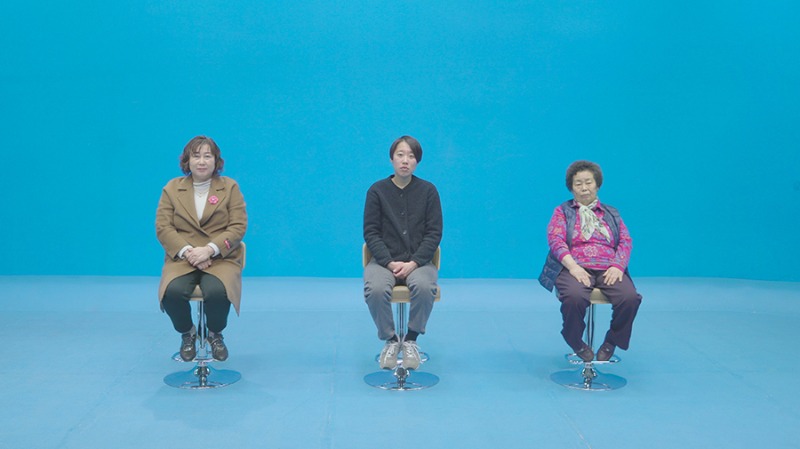
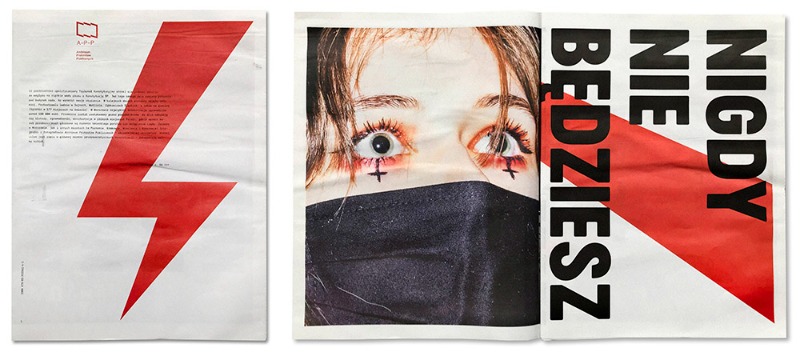
When the body becomes Manifesto Date: 2021. 10. 13 ~ 11. 03 Venue: ARTSPACE BOAN 3, BOANBOOKS Artist: Bora Lee-Kil, Kyuri Jeon, Ragyeom Kang, SHARE, center for Sexual rigHts And Reproductive justicE (Aan Paak / Eunjin Lee / Tari Young-jung Na / Design collaborator Hyejin Yeo), A-P-P (ARCHIVE OF PUBLIC PROTESTS), Elektra KB, Kira Dane & Katelyn Rebelo, Ola Jasionowska Opening Hours: 12PM – 6PM Closed on Monday Admission Free The Sense of Solidarity You Learn from Running a Long Race We must not forget that this struggle is like a long race. Hopefully, the situation created by the far-right government has made us more sympathetic to each other. Future generations who will be responsible for the next vote must be empathetic to this resistance. —Rafal Milach When I was reading the epigraph by Rafal Milach, a participating artist of When the Body Becomes Manifesto and a member of the Archive of Public Protests (A-P-P), my eyes stopped at the word hopefully. A-P-P is a project group of activists, artists, and researchers in Poland. It is a platform for documenting protests against the continued oppression of women and minorities, and the documents in its collections are available to anyone who needs solidarity. Catholic fundamentalists and the Polish government attempted to strengthen the country’s abortion laws in 2016. More than 100,000 Polish women went out on the street. They were called the Black Protest, and they influenced the fights of women and minorities in the rest of the world, including in South Korea. However, the Polish government enforced a law banning all abortions, even in the case of fetal malformation, and last year, the Constitutional Court favored it. I started to revisit this Polish case because I was hesitant to say if the situation was still hopeful, especially when the great courage of many women was trampled, the struggle was exhausted, and the experience of victory was absent. After a brief thought, I felt abashed, recalling many long struggles that I’ve encountered in South Korea. “We struggle to live together,” said a laid-off worker, an expression that resounded in my head. The long struggles were sometimes a moment of intense protest, nevertheless it was a daily life that had to be lived every day. Sometimes it was a time of stagnation for which no answer could be found. Many, however, created a space where people from different positions reached out to each other in solidarity. Artistic methods became the link among them. The acknowledgment that art could not change anything in front of oppression and discrimination made me helpless. However, as the A-P-P shows, photos and videos become testimonies, and songs harmonize us. Art sometimes turns the battleground into a fun mess and stays together with those who endure between gaps that politics and systems could not quickly stitch up. This moment shows what art should do and becomes a symbol and a history. Let Us Imagine a World after the Abortion Legalization Here is a struggle that has become history. South Korea became a country that legalized abortion for the first time in sixty-eight years, in 2021. In fact, on April 11, 2019, the Constitutional Court ruled the previous abortion laws unconstitutional, thanks to many women’s prolonged demands. However, the government added an exception clause to the legislative notice, which made women come out on the streets again. When this exhibition was about to begin, we—women artists—got together to create The Word of Square in an artistic language; however, it was canceled several times due to the pandemic. Meanwhile, through twists and turns, abortion was eventually decriminalized. The relief and pleasure of victory, however, made us think about the post-process in detail because it shouldn’t end with the fact that a woman would not be punished. What can art tell when we expand its discourse to the problems that have been hidden behind abortion crime and excluded? The history of anti-abortion laws where no woman could not decide abortion has controlled women’s bodies. The deprivation of the reproductive rights of disabled, queer, and unmarried women is another level of discrimination from the perspective of seeing women’s bodies as reproductive tools. Under the name of the law, it has expanded prejudice and hatred and limited our imagining of different ways of life. The exhibition sheds light on the problems of hierarchy and exclusion that exist behind the criminalization of abortion, the experiences of various bodies that have been underprivileged, the deprivation of health rights and related information, and the unspoken delicate emotions of women and minorities under strongly prejudiced laws. The exhibition invites artworks that speak for bodily experiences, including abortion. Moving a step further from sharing pain, the show asks for dialogue about how law and power control individuals. It connects us across different regions, genders, and times to open a forum for building the world after the legalization of abortion. Let us run for escape together.
